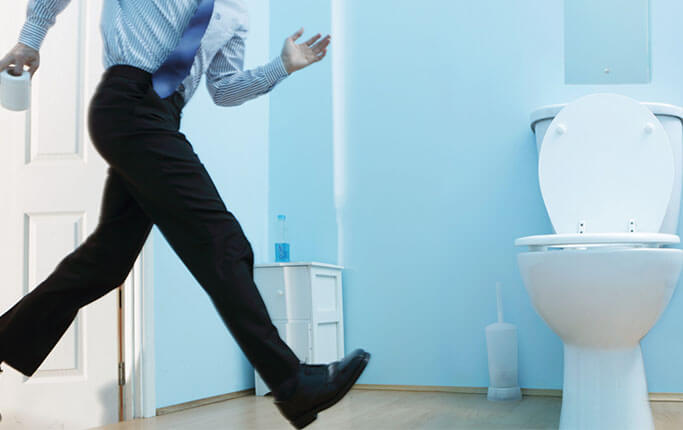Fecal incontinence is the inability to control bowel movements, causing stool (feces) to leak unexpectedly from the rectum. Also, called bowel incontinence, fecal incontinence ranges from an occasional leakage of stool while passing gas to a complete loss of bowel control.
Common causes of fecal incontinence include diarrhea, constipation, and muscle or nerve damage. The muscle or nerve damage may be associated with aging or with giving birth.
Whatever the cause, fecal incontinence can be embarrassing. But don’t shy away from talking to your doctor. Treatments are available that can improve fecal incontinence and your quality of life.
What causes fecal incontinence?
Fecal incontinence has many causes, including
- diarrhea
- constipation
- muscle damage or weakness
- nerve damage
- loss of stretch in the rectum
- childbirth by vaginal delivery
- hemorrhoids and rectal prolapse
- rectocele
- inactivity
How is fecal incontinence treated?
Treatment for fecal incontinence may include one or more of the following:
eating, diet, and nutrition
These steps may be helpful:
- Eat 20 to 30 grams of fiber per day. This can make stool more bulky and easier to control.
- Avoid caffeine. This may help prevent diarrhea.
- Drink several glasses of water each day. This can prevent constipation.
Medications
Try these medicines to reduce the number of bowel movements and the urge to move the bowels:
- Imodium
- Lomotil
- Hyoscyamine
Bowel training
Schedule bowel movements at the same times each day. This can help prevent accidents in between.
Pelvic floor exercises and
Begin a program of regularly contracting the muscles used to control urinary flow (Kegel exercises). This builds strength in the pelvic muscles and may help reduce bowel incontinence.
Biofeedback
A sensor is placed inside the anus and on the abdominal wall. This provides feedback as a person does exercises to improve bowel control.
Electrical stimulation
Sacral nerve stimulator. A surgeon implants a device that stimulates the pelvic nerves. This procedure may be most effective in people with bowel incontinence due to nerve damage.
Surgery
Surgery may be recommended for people whose bowel incontinence is not helped by noninvasive treatments. The types of surgery include:
Sphincter surgery
A surgeon can stitch the anal muscles more tightly together (sphincteroplasty). Or the surgeon takes muscle from the pelvis or buttock to support the weak anal muscles (muscle transposition). These surgeries can cure many people with bowel incontinence that’s due to a tear of the anal sphincter muscles.
Sphincter cuff device
A surgeon can implant an inflatable cuff that surrounds the anal sphincter. A person deflates the cuff during bowel movements and reinflates it to prevent bowel incontinence.
Colostomy
Surgery to redirect the colon through an opening created in the skin of the belly. Colostomy is only considered when bowel incontinence persists despite all other treatments.
Newer, nonsurgical procedures are also available to treat bowel incontinence, because they are relatively new, their long-term effectiveness and safety aren’t as well known as other treatments.
Radiofrequency anal sphincter remodeling
A probe inserted into the anus directs controlled amounts of heat energy into the anal wall. Radiofrequency remodeling creates a mild injury to the sphincter muscles, which become thicker as they heal.
Injectable biomaterials
Materials such as silicone, collagen, or dextranomer / hyaluronic acid can be injected into the anal sphincter to boost its thickness and function.
References:
http://www.mayoclinic.org/diseases-conditions/fecal-incontinence/home/ovc-20166830
http://www.webmd.com/digestive-disorders/bowel-incontinence#2


